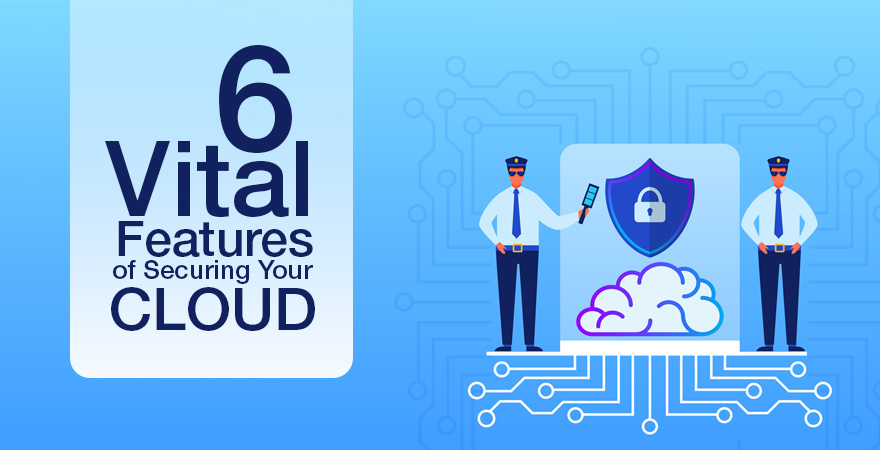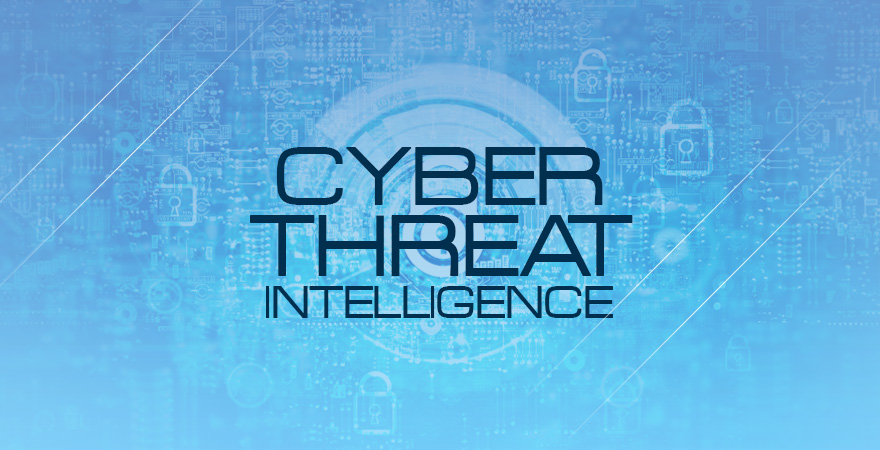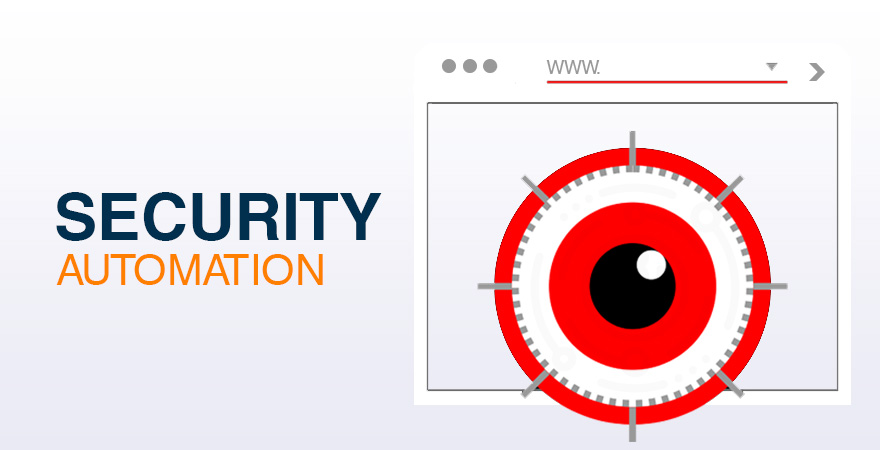As organizations weigh the imminent Benefits of Cloud Based Solutions, cost and administrative benefits are an overwhelming part of the whole exercise. However, this preoccupancy with costs tends to undermine the most critical aspect of any cloud migration, which is Security.

Granted that lower costs and high scalability are some of the obvious Advantages an Organization would like to tap from its Cloud Deployment, the story does not end there. With regulations around data management getting stringent across the globe, cloud security is gaining more limelight than ever.
Also Read: 12 Security Questions to Ask From Your Cloud Solution Provider
In this post, we will try to highlight the six important features of cloud security controls that tenants of such solutions must adopt to bolster their cyber security profile.
Threat Intelligence
Long gone are the days when organizations would sluggishly and reluctantly approach a Cyber Security breach. Today, the immediate and long term costs of any such breach are too astronomical for many organizations to recover from. In some cases, the damage to reputation is irreparable.

Also Read: Cloud Security Breaches of 2019 and the Way Forward
The solution is a proactive approach to cloud security that is centered on preventing cyber security breaches over the cloud, rather than containing their impact. To achieve this feat, each cloud tenant will need to gather, analyze and process vast data about latest and emerging cyber threats.
The vast pool of Threat Intelligence data will serve as a basic building block for your organization’s security posture. An elaborate mechanism should be put into place that not only collects and processes this data, but also effectively incorporates its valuable insights into the Cloud Security Mechanisms already in place.
Security Automation
As cloud infrastructures grow in both size and complexity, the sheer scale of the task of cloud security greatly exceeds human capacity. This does not imply that the role of humans in cloud security should be abolished altogether. Some degree of automation is surely required to cope with present day challenges.

This automation will prove quite fruitful in monitoring traffic across both the cloud and On-Premise Infrastructures. Another key area where automation can do wonders is identification of potential threats in light of certain pre-defined criteria.
Lastly, security automation can be very effective when implementing or modifying any security measures. Automating this process should ensure that there is no error or omission in the implementation phase and that all aspects of the Cloud Infrastructure have been addressed at the organizational level.
Application Level Protection
With the growth of cloud infrastructures, more and more applications are becoming cloud native. It is undisputed that the first line of defense in this case would obviously be Web Application Firewalls. However, they alone would not be sufficient to prevent application delivered threats.
Each application, whether cloud native or on premise, executes countless processes on the infrastructure it runs on. Some of these processes may contain well cloaked threats. For deep protection, behavior of cloud native applications will have to be closely monitored.
As this is a complex and processing intensive task, both Machine Learning (ML) and Artificial Intelligence (AI) should be utilized. The ML aspect will identify potentially maliciously codes accompanying cloud native apps, while AI based algorithms will mitigate or halt the impact of any such malicious actor.
Integration of Security across the Cloud
Most of the present cloud infrastructures are a blend of hybrid or multi-cloud solutions. A hybrid cloud uses on premise infrastructure for some workloads, while the remaining are handled over the cloud. A multi cloud infrastructure is even more complex and thus, difficult to secure.
Multi Cloud Deployments present the additional challenge of different security measures and protocols by each Cloud Service Provider (CSP). To secure such deployments, a holistic view of security will have to be adopted that plugs any vulnerabilities or gaps in security, without compromising performance.
Centrally Visible Cloud
With growing size and complexity of present cloud solutions, individual monitoring of each solution in isolation is simply not an option anymore. On the contrary, cloud tenants will have to evolve a mechanism whereby all the cloud based and on premise solutions are converged and then monitored or controlled.
This convergence does not apply to any single function, rather all aspects of the cloud solution should be encompassed. Some of the critical components of this centralized visibility model should be security policies, configurations and user activity.
Developing an effective centralized model is no doubt an uphill task, but the exercise will go a long way in bolstering the security profile of any Cloud, Hybrid or Multi Cloud Deployment. A central review of security policies will help identify any Weakness or Vulnerability in the existing infrastructure.
Proper configuration of hardware is a very critical component of cloud security. Malicious actors keep a watchful eye for any misconfigured pieces of hardware that can be exploited to gain access to the entire network and inflict damage. A centralized and periodic review of hardware configuration practices will prove very fruitful.
Monitoring user activity over the cloud centrally is also an important aspect of cloud security. Any IT based infrastructure is susceptible to both internal and external threats. Network and traffic monitoring is an effective tool for both these sources of threat.
It is an established practice of Cyber Criminals that once they gain Unauthorized Access to any network, they try to blend their activity with the existing data flows of that network. If the network traffic and user activity is being monitored centrally, identifying and isolating any unusual patterns becomes more feasible.
Cloud Security and Shared Responsibility Model
This vital aspect of cloud computing solutions is either misinterpreted or not implemented in letter and spirit. The Cloud Service Provider (CSP) is responsible only for Peripheral Security of The Solution. Secondly, the capability and capacity of CSPs in securing their solutions is rapidly improving.
So, the other weak link in the whole cloud security chain is obviously the cloud tenant. In case of large organizations, the end users may be in the hundreds or even thousands. Each end point device that is used to gain access to the cloud or even the on premise infrastructure represents a potential source of risk.
Therefore, the physical and access related security of end point devices of each cloud tenant is also a very important part of the cloud security puzzle. The physical security of such devices can be ensured by improving employee awareness and that no device falls in the wrong hands.
So far as access related security of end point devices is concerned, this can be achieved by ensuring strong passwords. Ideally, Dynamic or One Time Passwords (OTP) can be incorporated for enhanced access controls. The very users of any cloud solution are in fact the first line of defense in the overall cloud security paradigm.
Conclusion
An effective cloud security posture is possible with a blend of both human and automated controls. What’s most important is that each individual organization outlines its cloud security priorities according to its unique deployment, instead of a one size fits all approach.


